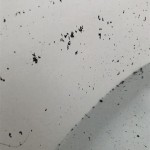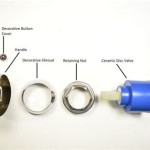How To Sand and Stain a Bathroom Vanity
Updating a bathroom vanity with a fresh stain can dramatically improve the room's aesthetic. This process involves several key steps to ensure a professional-looking result. Preparation is crucial for achieving a smooth, even finish and long-lasting durability.
Preparing the Vanity
Before beginning the sanding and staining process, the vanity must be properly prepared. This involves removing any obstacles and creating a clean workspace.
- Remove Hardware: All hardware, including knobs, pulls, hinges, and doors, should be removed and stored safely. This prevents damage to the hardware and allows for thorough sanding and staining.
- Clean the Vanity: Thoroughly clean the vanity using a suitable cleaner to remove any dirt, grime, or residue. A degreaser may be necessary for stubborn grease or oil buildup.
- Protect the Surroundings: Cover the surrounding areas, such as the floor and countertops, with drop cloths or plastic sheeting to prevent dust and stain from spreading.
- Ventilation: Ensure adequate ventilation in the work area. Open windows and doors or use a fan to circulate air and minimize exposure to dust and fumes from the stain and sealant.
Sanding the Vanity
Proper sanding is essential for creating a smooth surface that readily accepts the stain. This step requires patience and attention to detail.
- Initial Sanding: Start with a coarser grit sandpaper, such as 100-grit, to remove the existing finish and any imperfections. Sand in the direction of the wood grain to avoid scratches.
- Gradual Sanding: Gradually increase the grit of the sandpaper, moving to 150-grit, then 220-grit. This process smooths the surface and prepares it for staining.
- Sanding Between Coats: Lightly sand between each coat of stain using fine-grit sandpaper (320-grit or higher) to ensure a smooth and even finish. This helps to remove any raised wood fibers.
- Removing Dust: After each sanding step, thoroughly remove all sanding dust using a tack cloth or a vacuum with a brush attachment.
Applying the Stain
Applying the stain requires a methodical approach to achieve consistent color and coverage.
- Stain Selection: Choose a stain specifically designed for wood and compatible with the vanity's material. Consider the desired color and finish – oil-based stains typically penetrate deeper and offer richer colors, while water-based stains are easier to clean up and have lower VOCs.
- Testing the Stain: Test the stain on an inconspicuous area of the vanity or a scrap piece of similar wood to ensure the color is as desired.
- Application Method: Apply the stain using a brush, rag, or foam applicator, following the manufacturer's instructions. Work in the direction of the wood grain for even coverage.
- Wiping Excess Stain: After applying the stain, allow it to penetrate for the recommended time according to the manufacturer's instructions. Then, wipe off any excess stain with a clean cloth, working in the direction of the wood grain.
- Drying Time: Allow the stain to dry completely according to the manufacturer's instructions before applying additional coats or a sealant.
- Multiple Coats: Multiple thin coats of stain often provide a richer and more even color than one thick coat. Allow each coat to dry completely before applying the next.
Sealing the Vanity
Sealing the stained vanity protects the finish and enhances its durability.
- Sealant Selection: Choose a sealant that is compatible with the stain used. Options include polyurethane, varnish, or lacquer. Consider the desired level of sheen – matte, satin, or gloss.
- Applying the Sealant: Apply the sealant using a high-quality brush or foam applicator, following the manufacturer's instructions. Work in thin, even coats to avoid drips and runs.
- Drying and Curing: Allow the sealant to dry and cure completely according to the manufacturer's instructions before reinstalling the hardware and using the vanity.
- Light Sanding (Optional): Lightly sanding with very fine-grit sandpaper (400-grit or higher) between coats of sealant can further enhance the smoothness of the finish. Remove any sanding dust before applying the next coat.
Reassembling the Vanity
Once the sealant has fully cured, the vanity can be reassembled.
- Reinstall Hardware: Carefully reinstall all hardware, ensuring it is properly aligned and secured.
- Final Inspection: Inspect the finished vanity for any imperfections or areas that may require touch-ups.

Restaining Bathroom Cabinets With Water Based Wood Stain Roots Wings Furniture Llc

How To Refinish A Bathroom Vanity Bower Power

Restaining Bathroom Cabinets With Water Based Wood Stain Roots Wings Furniture Llc

Update Your Bathroom Cabinets For Under 70

How To Refinish A Bathroom Vanity Bower Power

How To Refinish Bathroom Cabinets Diy Domestic

Diy Gel Stain Cabinets No Heavy Sanding Or Stripping Maison De Pax

Transforming Bathroom Vanity With Gel Stain Java

How To Use Gel Stain On Cabinets The Good Bad

Refinish Bathroom Vanity Diy Project How To Stain Oak Cabinets
Related Posts







